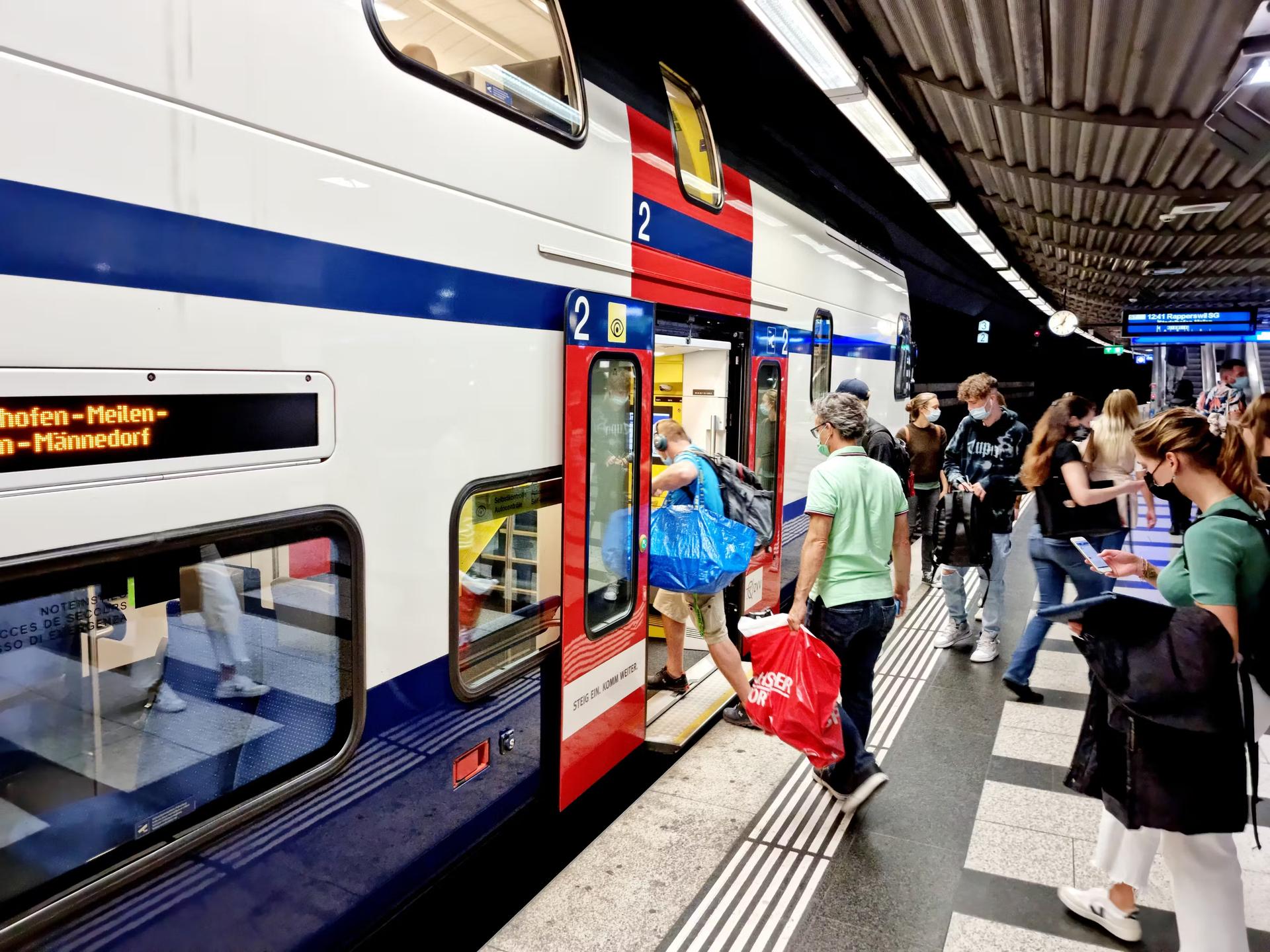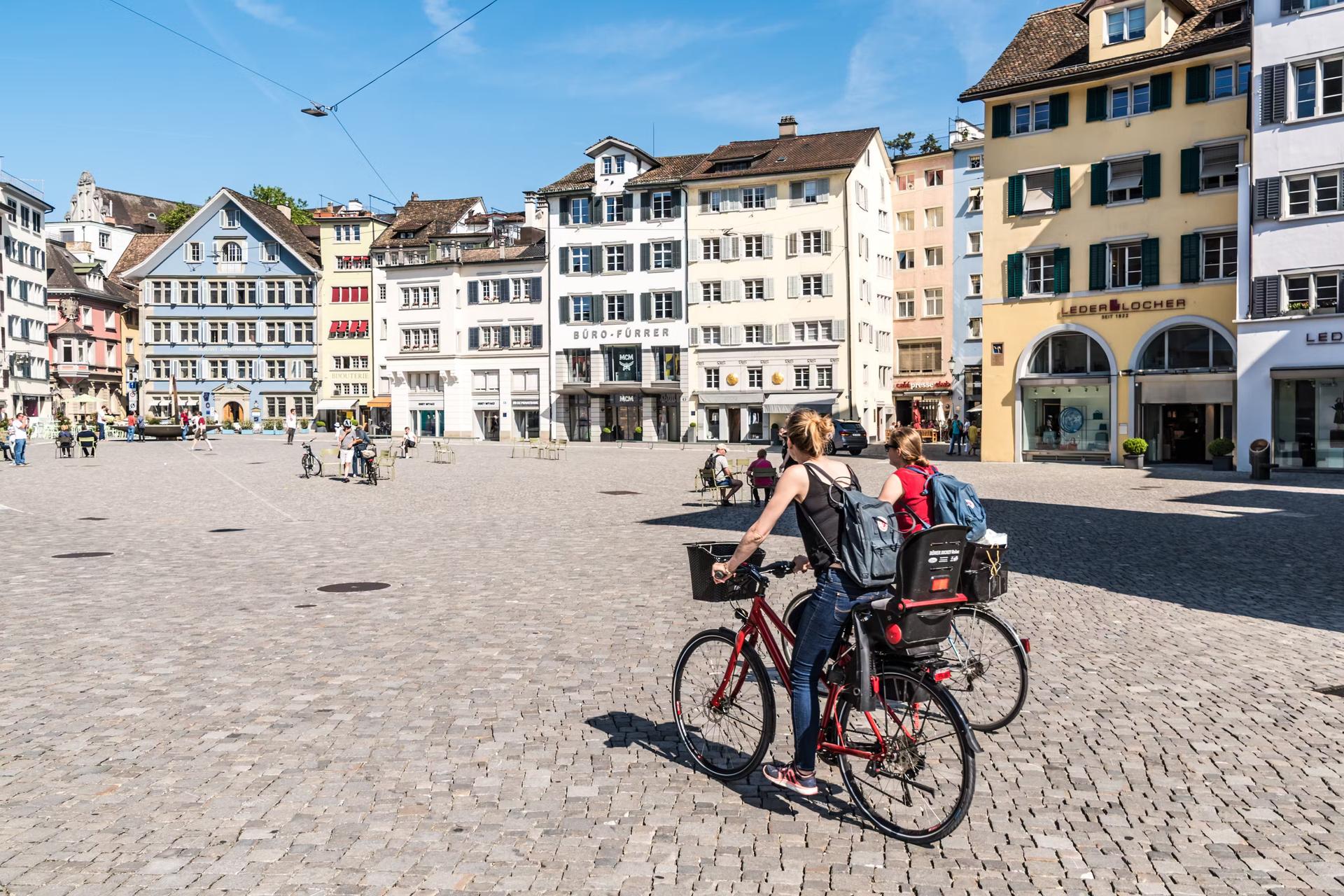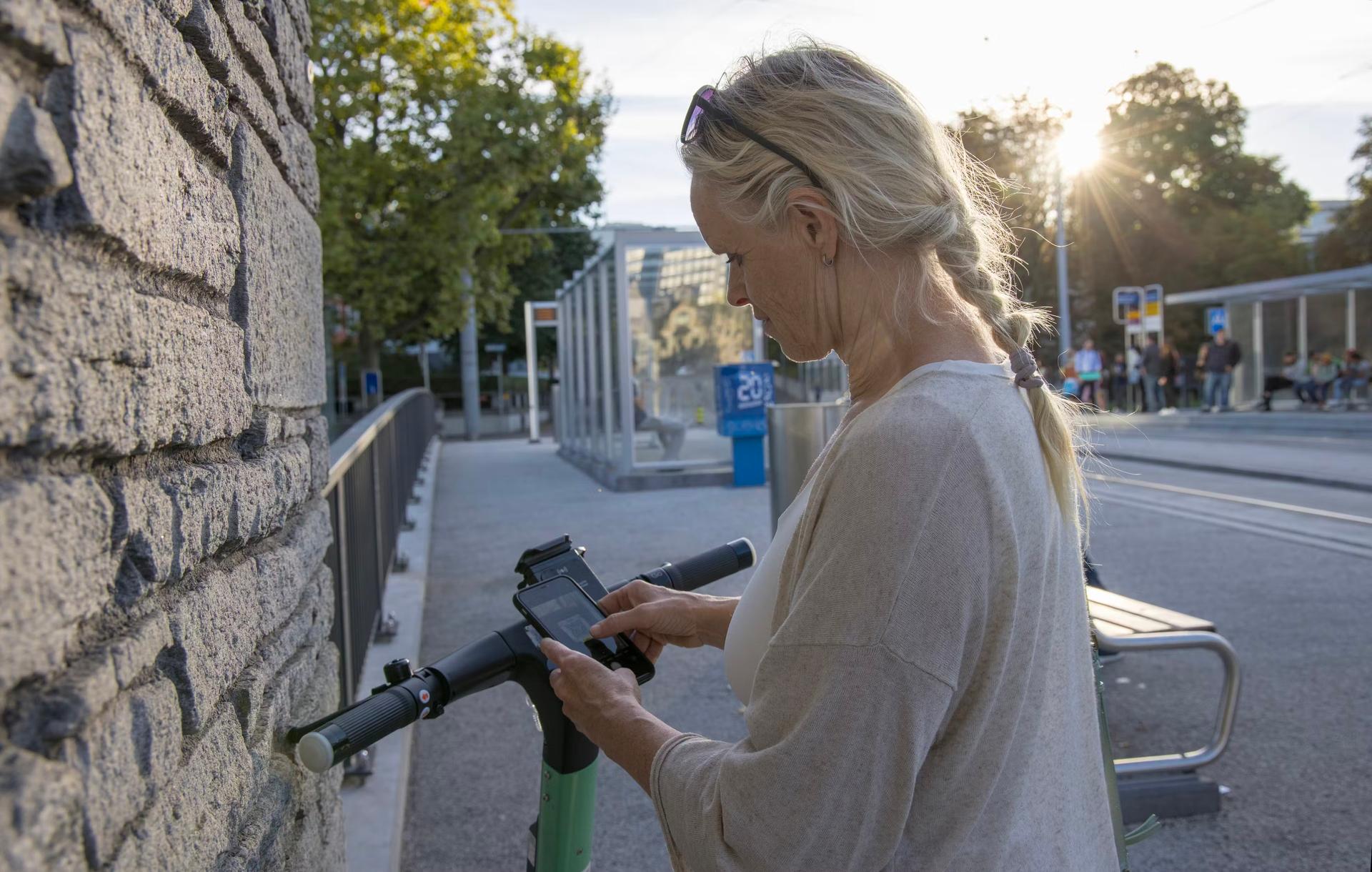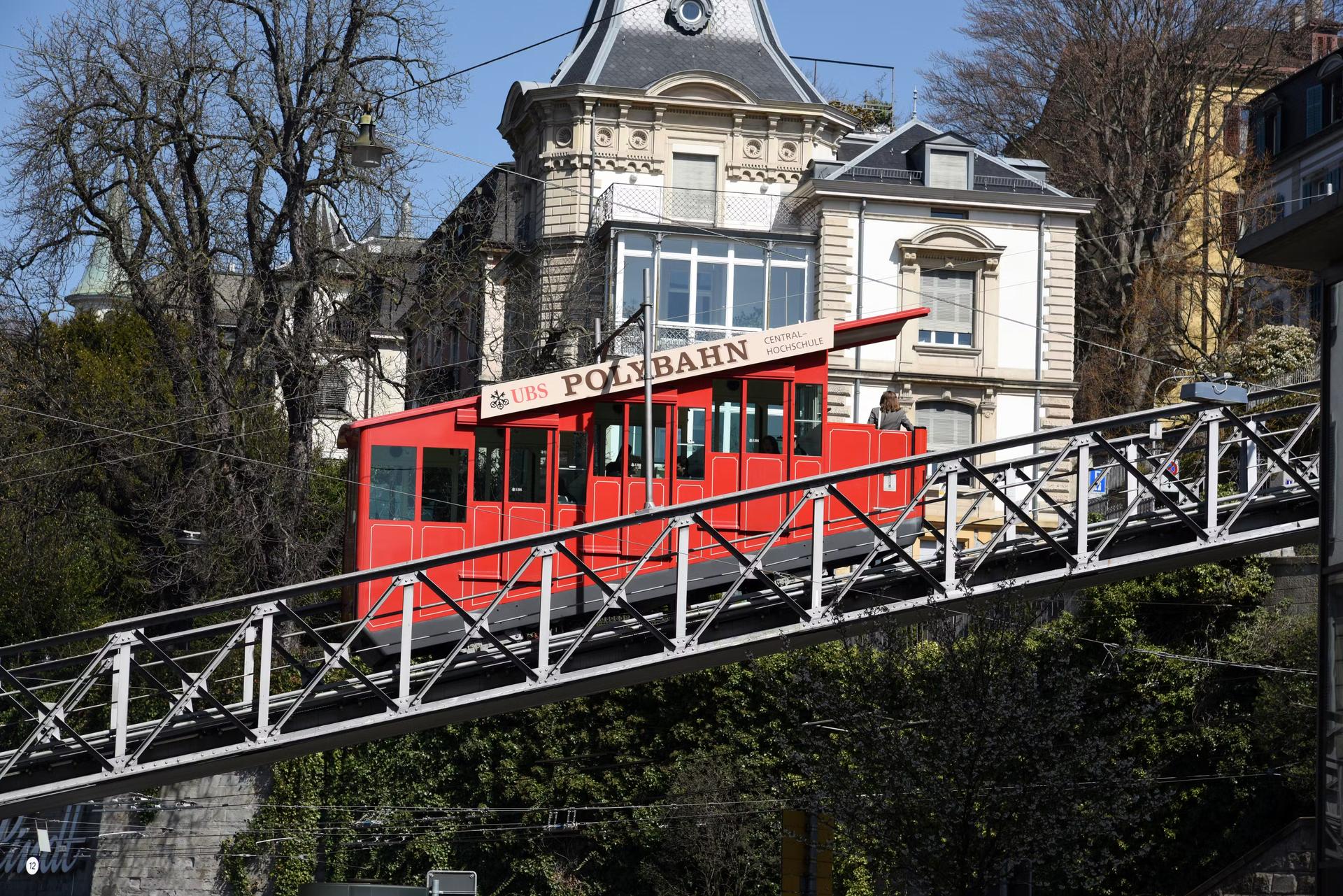
Despite being Switzerland’s largest city, Zürich is a compact place with many pedestrian areas, making it ripe for exploration on foot. However, as befits a Swiss metropolis, its public transport network is highly organized and runs like clockwork.
Here’s our guide to getting around Zürich, whether by S-Bahn train, tram, bus, ferry, bicycle or scooter, a seamlessly interconnected network which will take you from the cobbled hills of the Altstadt (Old Town) to the popular nightlife zone of Züri West to the city’s local mountain Uetliberg.
Get local insight on destinations all over the world with our weekly newsletter delivered to your inbox.
Travel like a local on an electric tram
Zürich has had electric trams since the late-19th century, and today’s modern incarnations are the most visible symbols of the city’s efficient public transport system.
Clean, spacious and extremely regular, they serve most parts of central Zürich, from the nightspots and cultural venues of Zürich West to the shopping district around Bahnhofstrasse (the opera house on Lake Zürich’s right bank) and even out to the airport (though it’s quicker to get there on the S-Bahn).
And where trams don’t venture – for example down the quaysides along the lake – buses fill in, making for a highly connected network, all coordinated and ticketed by the Zürich Transport Association (ZVV).
 Swift and punctual service is provided by the comprehensive S-Bahn network © Getty Images
Swift and punctual service is provided by the comprehensive S-Bahn network © Getty Images
Ride the S-Bahn to Uetliberg
For longer journeys in and around Zürich, swift and punctual service is provided by the comprehensive S-Bahn network, which has been expanded four times since its launch in 1990.
From the Hauptbahnhof (main train station), S-Bahn trains leave for destinations including Schaffhausen and the Rheinfall, the pretty medieval village of Rapperswil at the southern end of Lake Zürich (to which you could ride the ferry instead, if you have the time) and the culture-packed city of Winterthur.
For an easy day trip, jump on the S10 for Uetliberg, Zürich’s so-called local mountain, and within half an hour you’ll be strolling through nature at an altitude of 871m (2858ft), overlooking the city down below.
Tour Lake Zürich by boat
Zürich hugs the northern end of its eponymous lake and is divided in two by the Limmat River. Both waterways add hugely to the city’s identity, lifestyle and navigability, not to mention its picture-postcard appearance.
Get your bearings by hopping on one of the ferries run by the Lake Zürich Navigation Company (ZSG), which offers river cruises – round trips to destinations around the lake – as well as so-called “unique cruises,” which let you enjoy a fondue, a burger or even a silent disco as you sail.
 Zürich is a pretty cycle-friendly city © Getty Images
Zürich is a pretty cycle-friendly city © Getty Images
Pedal through the city on a free bike
Zürich is pretty cycle-friendly already, though the city authorities are aiming to make it even more so with their Velo Strategy 2030, a master plan involving building new bike lanes, riverside cycle paths and parking stations throughout the city.
If you don’t have your own bike, Züri Rollt can lend you one for free with a returnable deposit of 20chf. The company has two pick-up points, at the Hauptbahnhof and at Pestalozziwiese. Choose your bike (or e-bike, available for a small fee) and head off to explore the city on two wheels.
For a lovely day trip, cycle all the way to Baden on the path alongside the Limmat River – a pleasant, mostly flat 28km (92-mile) route with multiple picnic spots – before putting yourself and your bike on the train back to Zürich.
 Attach your phone to an electric scooter and zip about the city © Getty Images / iStockphoto
Attach your phone to an electric scooter and zip about the city © Getty Images / iStockphoto
Zip through Züri on an electric scooter
Zürich has fully embraced the electric-scooter trend. Multiple companies, including Voi, Bolt and Lime, offer on-street scooter hire.
Track down a free-floating scooter (you’ll see them seemingly abandoned all over the place) on your chosen provider’s app, then scan it, attach your phone to the holder, and you’re free to zip about the city as you please. It’s a convenient way to get from A to B, if a little pricey for regular use.
 The little red funicular known as the Polybahn is a Zürich icon © Getty Images
The little red funicular known as the Polybahn is a Zürich icon © Getty Images
Hop on the Polybahn for a city panorama
Founded in 1886, the little red funicular known as the Polybahn is a Zürich icon (and essentially a way for students to avoid walking up a hill). It takes a little more than a minute and a half to ascend from the Limmatquai to the Polyterrasse at ETH Zürich, the famed Swiss Federal Institute of Technology.
The view from the top takes in the streets of Niederdorf, the Limmat River and the Old Town over the other side, along with Zürich’s twin churches, the Fraumünster and Grossmünster.
Accessible transportation in Zürich
Zürich’s public transport network is generally well adapted for people with reduced mobility, with lowerable-floor buses, barrier-free stations and step-free trams and S-Bahn trains. Ticket machines are adapted for the visually impaired, while stations and platforms have raised white safety lines.
All ferries on Lake Zürich are wheelchair accessible (though not the river boats) and most have disabled passenger toilets. The Polybahn is not adapted for wheelchair users. Full details of accessible travel in Zürich are available on the ZVV website.
For more information, see Lonely Planet’s Accessible Travel Resources page.
Transport passes
The city’s public-transport overlord, the Zürich Transport Association (ZVV), offers an integrated ticketing system across all forms of transport in Zürich, including the Polybahn and scheduled ZSG boat services (but excluding the unique cruises).
Single and multiple tickets can be bought on the smartphone app, online or at ticket machines and are valid on any form of public transport within the selected zone. The 24-hour ticket offers the best value for a whole day of travel (fares vary depending on the zones required).
If you’re planning on visiting more than a couple of the city’s museums, it may make sense to buy a Zürich Card, provided by Zürich Tourism and available to buy from ticket machines. Valid for 24 or 72 hours, it includes entrance to many museums and second-class travel across the public transport network, plus various discounts and offers. Don’t forget to validate your Zürich Card at a ticket machine before you use it for the first time.



